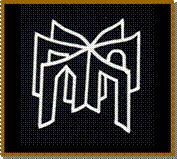El método histórico de Paz en El laberinto. Daniel Lorca.
Keywords:
Octavio Paz, Foucalt, Historia, Post-estructuralismo.Abstract
Resumen:
Este ensayo pretende explicar el tipo de historia que hace Octavio Paz en su obra El Laberinto. Esta explicación es necesaria porque la concepción de la historia, debido en gran parte a la influencia post-estructuralista de Foucault, ha cambiado radicalmente. Dicho de otra forma, los intereses de Paz con la historia no son los nuestros debido a las teorías de Foucault, y por lo tanto, juzgar su proyecto desde nuestra perspectiva actual nos puede llevar hacia la incomprensión.
Summary:
This essay aims to explain the type of history done by Octavio Paz in his work The Labyrinth. This explanation is considered necessary since the conception of history, mostly due to the influence of Foucault’s post-structuralism, has changed. That is to say, Paz´s interests in history are not similar to our current ones because of Foucault’s theories. Therefore to judge Paz´s work from our present perspective can lead us to incomprehension.
References
Aguilar Mora, Jorge. La divina pareja: historia y mito en Octavio Paz, México, Biblioteca Era, 1978.
Foucault, Michel. The archeology of knowledge, R. D. Laing (Ed.), A.M. Sheridan Smith (Trans.), London, Tavistock Publications, 1969.
Paz, Octavio. El laberinto de la soledad, Enrico Mario Santí (Ed.), Madrid, Ediciones cátedra, 2001. Conversación con Claude Fell, págs. 141-416.
Paz, Octavio. “Conversación con Claude Fell”, en El laberinto de la soledad, Enrico Mario Santí (Ed.), Madrid, Ediciones cátedra, 2001. Conversación con Claude Fell, págs. 417-444.
Unamuno, Miguel de. “En torno al casticismo”, en Unamuno, obras selectas, Julian Marías (Ed.), Madrid, Editorial Plenitud, 1960, págs. 47-144.
Downloads
Published
Issue
Section
License

Tejuelo is published with license Creative Commons Reconocimiento-NoComercial-SinObraDerivada 3.0 España.


.jpg)



